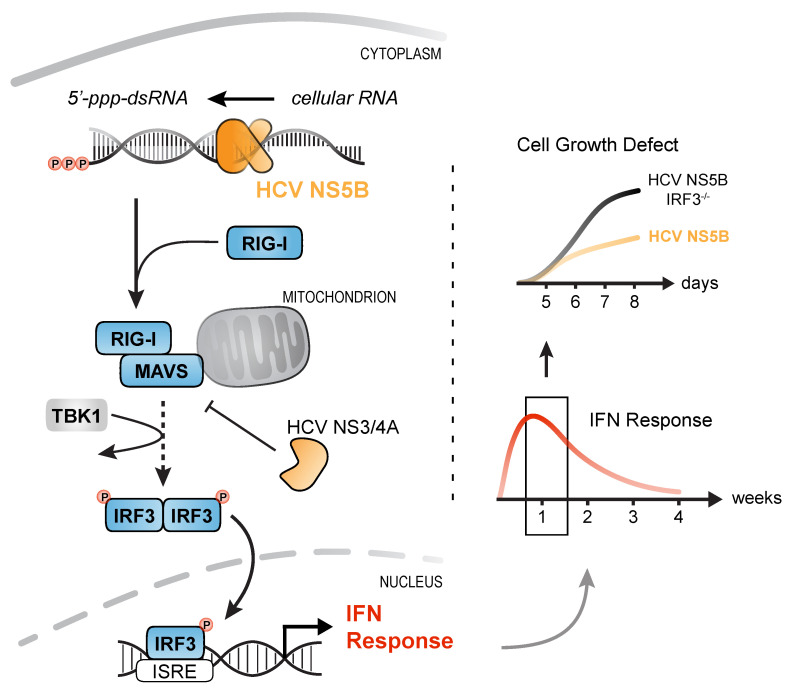Figure 7.
IRF3-mediated, but interferon- and caspase-independent cytostasis upon prolonged activation of RLR signaling. Expression of HCV NS5B generates virus-like immune-stimulatory dsRNAs from cellular RNA that are detected by the pattern-recognition receptor RIG-I. Activation of RIG-I triggers downstream signaling via MAVS, IRF3 phosphorylation, and subsequent translocation into the nucleus. IRF3 binding to the IFN-β and -λ promotor enhancers induces expression of IFNs which activate the antiviral immune system. Prolonged stimulation of the innate immune response caused a prominent IRF3-mediated growth defect of cells most strongly stimulated and was independent of IFN signaling or caspase activity. By targeting MAVS through NS3/4A, HCV not only dampens activation of the IFN response, but also restores cell viability in infected cells.

